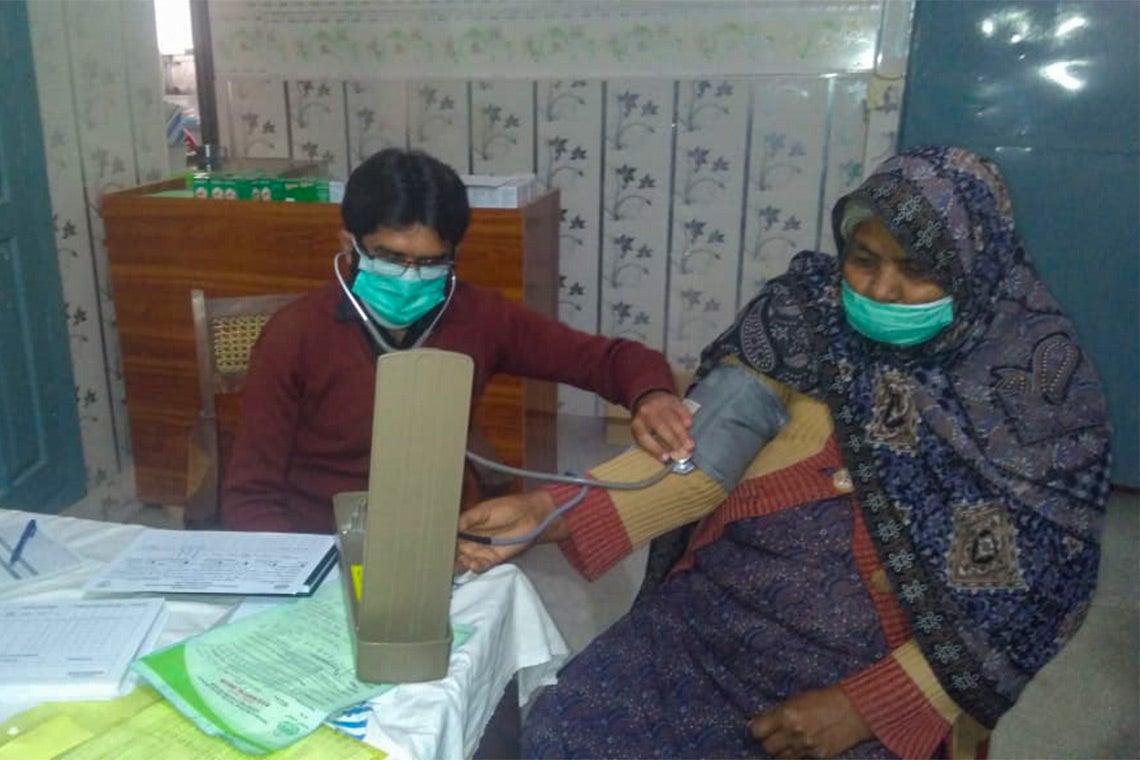
Researchers at the University of Toronto’s Dalla Lana School of Public Health are working to implement telemedicine for managing diabetes and hypertension in rural Pakistan – care that is urgently needed to replace traditional services disrupted by the COVID-19 pandemic.
Amid the chaos and calamity of COVID, the potential for telemedicine is finally being realized in health care and health systems around the world. The DLSPH team is hoping to learn whether specialists in Pakistani cities can use it to support health providers on the ground, not just to re-establish care but to provide even better treatments than they offered pre-COVID.

Xiaolin Wei
“Pandemics will teach us how to adopt new technologies to remote care,” says Xiaolin Wei, an associate professor at DLSPH, epidemiologist and global health policy scientist leading the study. “Remote management will be the future of health care – especially for primary care which has a low capacity in low- and middle-income countries (LMICs). There is a great potential for chronic, serious diseases like diabetes and hypertension as they are the rising burden of disease in LMICs.”
In many parts of Pakistan, care for chronic diseases has fallen apart, Wei says. The country suffers high rates of diabetes and hypertension, and once patients begin to improve, they sometimes discontinue treatment because it’s too expensive.
As a result, Wei hopes to improve not just care but patient education. The team is using new technologies such as ECHO training platform to allow senior physicians based in Karachi to train and mentor nurses and other health providers in rural parts of the Punjab, and to see patients directly via video. Patients will also have access to a mobile app to monitor their blood pressure, blood sugar and medications.
The project is co-led by Dr. Amir Khan, the head of Pakistan’s Association of Social Development and an award winner in leading health policy changes.
“The development of telemedicine in LMICs and the progress we have made has been exponential,” says Hammad Durrani, the project manager and a PhD student at the Institute of Health Policy, Management and Evaluation (IHPME). “What we have achieved in the past two years of COVID-19 in terms of digital health diffusion and adoption is equivalent to the development of the past 20 years globally. Patients and providers are more willing and governments have fast-tracked the regulatory paperwork.”

Hammad Durrani
The disruption offers a chance to “reinvent virtual and hybrid virtual/in-person care models, with a goal of improved health-care access, outcomes, and affordability,” he says.
For the current project, the U of T research team will focus on the most vulnerable patients first, and will also offer remote COVID education and treatment. They believe their learnings will help to combat the same diseases among South Asian and other populations in Ontario, in regions such as Peel.
“Globally, we have seen that due to COVID-19, care for other diseases such as heart diseases, diabetes and cancers has been delayed,” says Durrani. “This stands true for Canada also, where we see patients [who] are struggling to get access to care for conditions like mental health and heart disease. At the moment, telemedicine is not part of our usual treatment delivery options, especially for specialist care. Our model is definitely something to think about even for a developed country like Canada to improve access to quality health care.”
Patients today appear more open to telehealth, and more interested in health overall, says Wei. He argues that the disruption of the pandemic has opened new opportunities to deliver medicine differently.
“I can see health literacy has been raised up, even in remote areas of developing countries,” Wei says. “The pandemic has raised people’s interest in their own health. That could open opportunities for us to measure disease and improve outcomes even in places where it has been difficult.”
The research is supported by a grant from the Canadian Institutes of Health Research.







